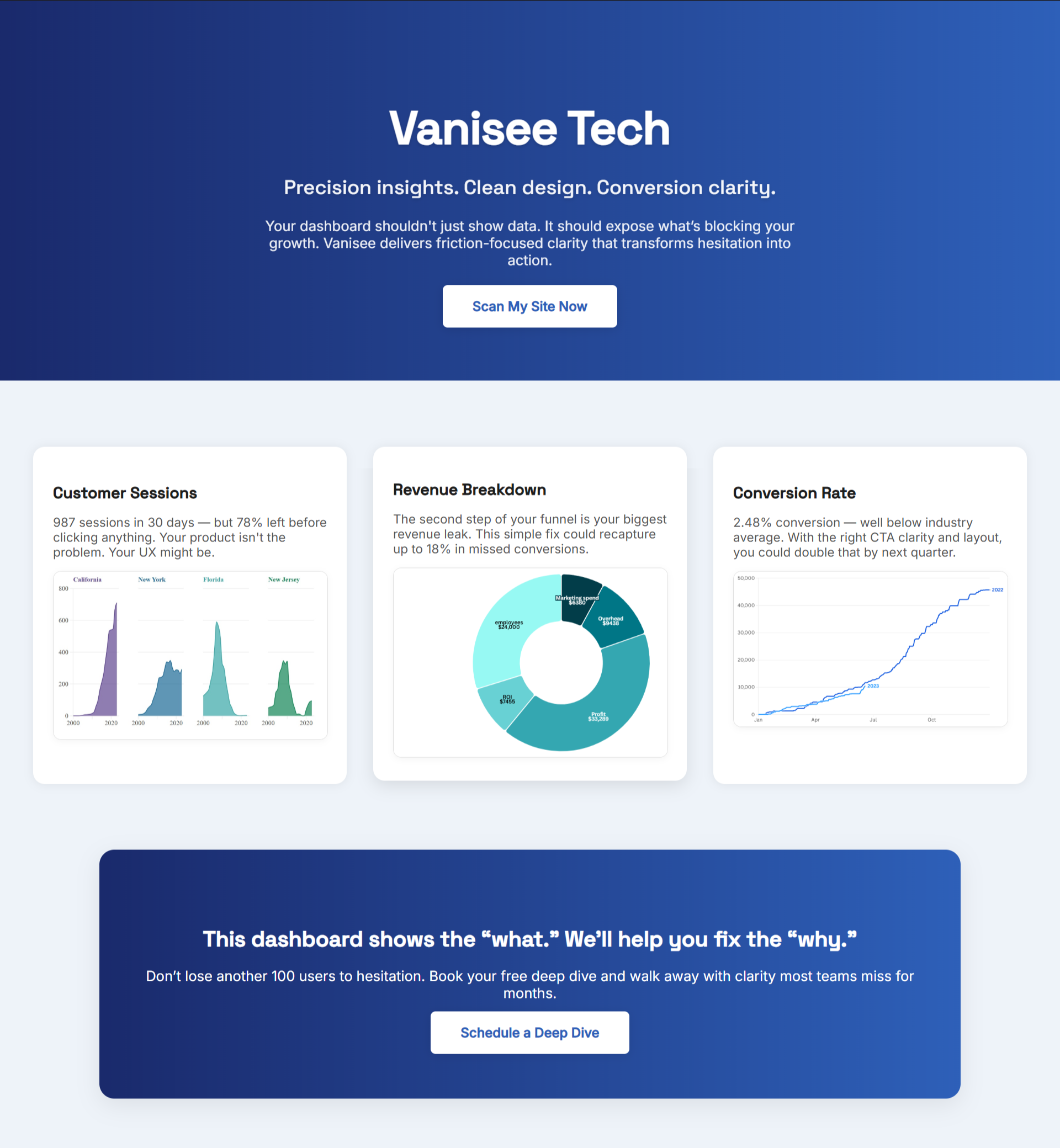You’ve felt it: ad spend rises, but orders don’t. The leak isn’t “strategy”; it’s the page a new visitor sees before they bounce. Before you lock into months of consulting, buy certainty—set up a two-week pilot that ships real change on the screen where conversion happens.
Define the Pilot Win in One Sentence
Write the win the same way you’ll say it in a demo: “Lift add-to-cart on [product] by making the first-screen decision obvious.” If a consultant can’t mirror that clarity during scoping, the next two weeks won’t get cleaner. For a playbook on first-screen clarity, see Win the First Screen to Increase Ecommerce Sales.
Scope to Decisions, Not Deliverables
Pilots stall when the work spreads to dashboards, research decks, or “sitewide audits.” Keep attention on a few places where hesitant visitors make—or avoid—commitments:
- Product page: headline, price framing, primary CTA, one proof element near the button.
- Cart / checkout: shipping, returns, and payment cues within one screen of the final action.
If the first target is checkout bleed, this two-week plan pairs well with Turn Cart Into Cash: Repair the Three Screens That Lose Orders—the flow is already mapped.
Five Signals You Can Verify Fast
Ask for before/after screenshots, not promises. Your pilot is healthy if, after one week, you can observe:
- Comprehension in 5–7 seconds on the first visible screen.
- CTA visibility on mobile without scrolling.
- Proof within eye-line of the primary action (delivery window, refund line, or verified review).
- Objection copy rewritten in plain language, not a badge cloud.
- Fewer detours (email popups, cross-sell carousels) before the primary click.
“What gets measured gets managed.” — Peter Drucker
Put these micro-signals into a shared scorecard. If they don’t move, you stop the pilot. If they improve, you keep the changes and choose the next page.
A Two-Week Plan That Produces Proof

Day 1: Align on a single outcome; collect current screenshots; define the measurement loop (session replays + click maps + order rate on the target page).
Days 2–3: Ship first-screen copy, CTA placement, and one credible proof item near the button. Publish behind feature flags if needed.
Days 4–5: Trim distractions: remove popups before action, collapse policy walls to one line, keep only one path forward.
Days 6–7: Re-measure; keep what helps; list the top two red-flags still slowing the click.
Week 2: Repeat on the next choke point (either cart or first checkout step).
Day 10: Ship a concise “before / after / result” readout. If orders lift or hesitation drops, expand. If not, you’ve capped your downside to two weeks.
For hesitation language to place beside the button—answers that lift orders today—see Turn Doubts into Orders: Increase Ecommerce Sales With On-Page Answers.
Red Flags That End the Pilot
- “We’ll need a month of research first.”
- “Let’s redesign the whole template.”
- “Results will show up after we finish the dashboard.”
Your pilot pays for itself by changing what a new visitor reads, sees, and can act on this week.
Why BluePing Helps You Hire Better—and Win Faster
You don’t have to guess which page is quietly wasting the most money. BluePing reads a live product or checkout page in ~30 seconds and returns a tight preview with 2–3 strengths and one visible red-flag to fix now—private to your team. Use it to choose the pilot target with confidence, then measure what moves. Join the waitlist; scan your highest-traffic page; the preview locks after 10 minutes to protect your data. Early access is limited.




.png)
